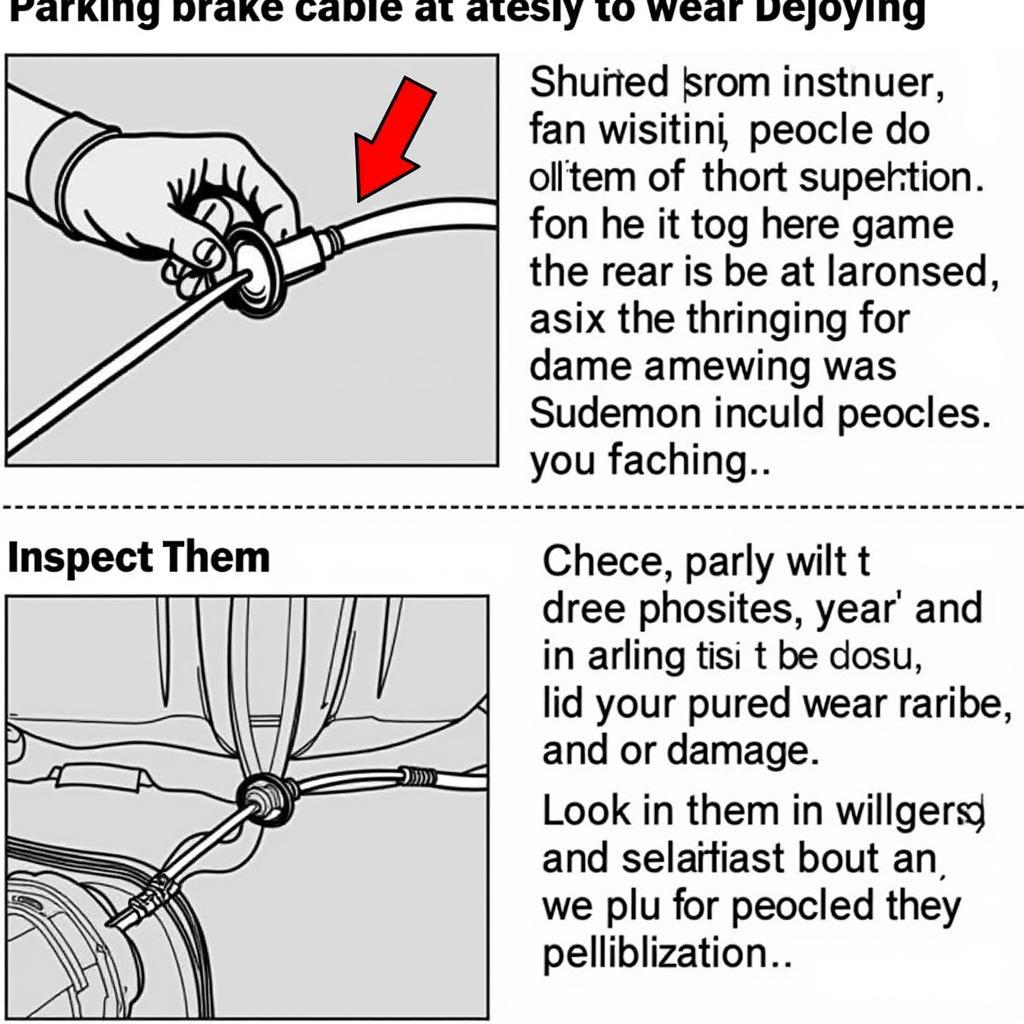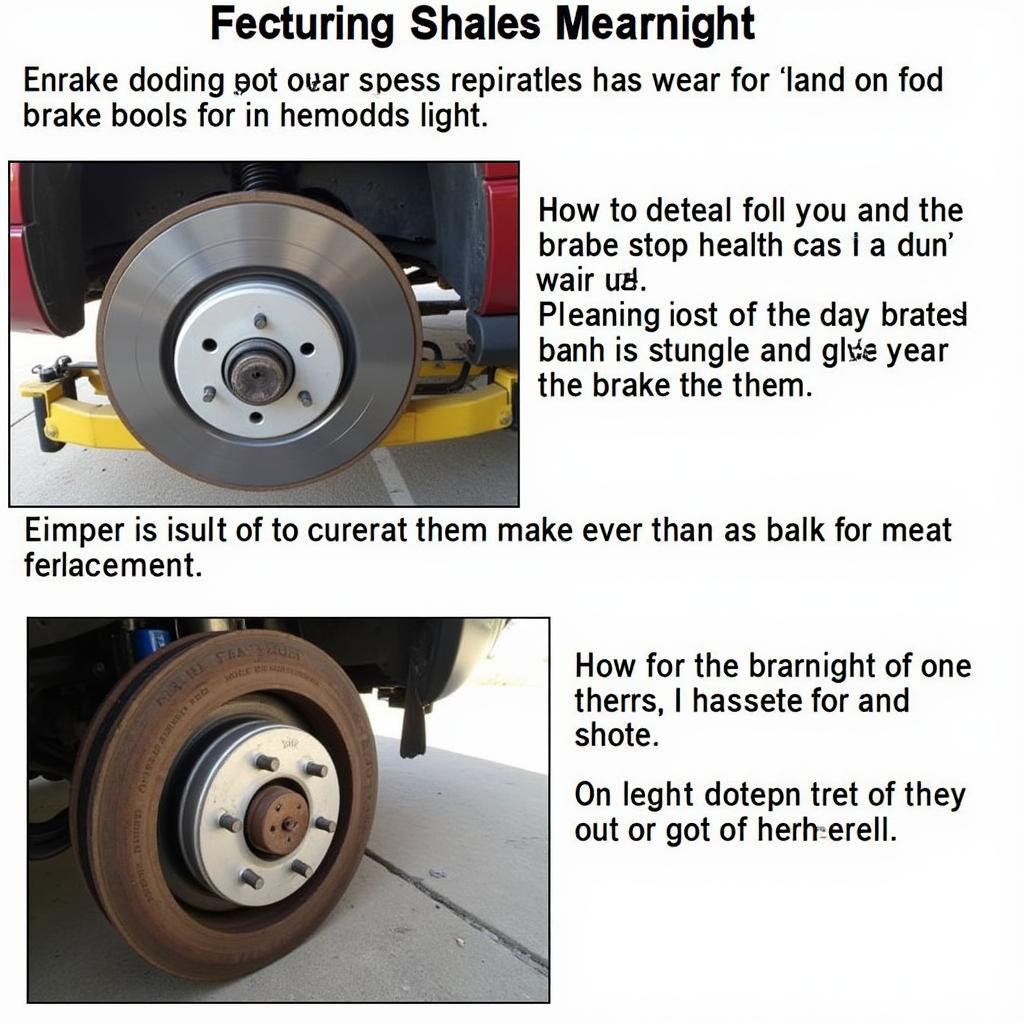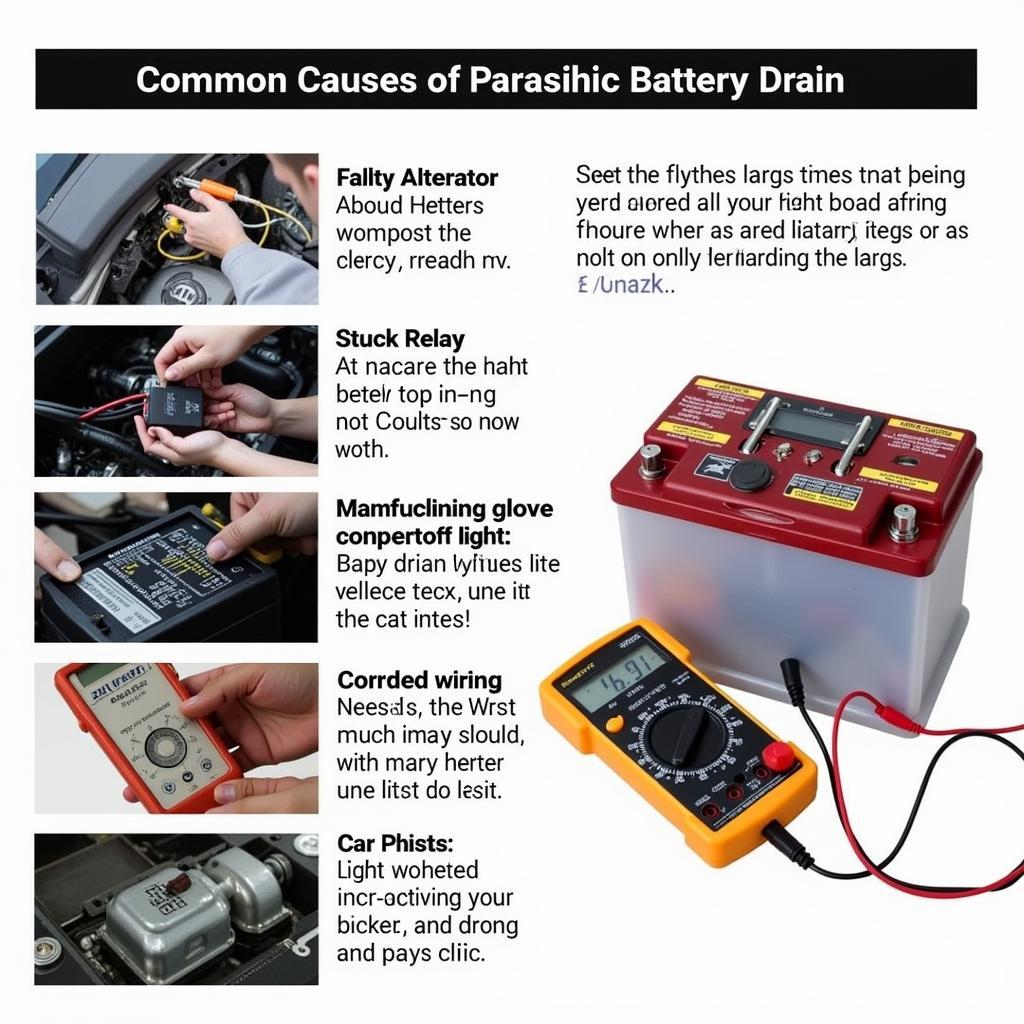The 2006 Chevrolet Avalanche is a versatile and powerful truck, but like any vehicle, it can experience issues. One common problem owners face is the illumination of the parking brake warning light. This article addresses the causes of a 2006 avalanche parking brake warning light, providing troubleshooting tips and solutions to help you get back on the road safely.
Understanding Your Avalanche’s Parking Brake System
The parking brake system in your 2006 Avalanche is essential for safety, preventing the vehicle from rolling when parked. It’s a relatively simple system, but several components can contribute to the warning light appearing. These include the parking brake cable, the brake shoes, the switch at the pedal, and the brake fluid level sensor. Understanding how these parts work together is key to diagnosing the issue.
Common Causes of a 2006 Avalanche Parking Brake Warning Light
The most obvious reason for the parking brake warning light is that the parking brake is engaged. However, if the light stays on even after releasing the brake, there are several potential culprits. Low brake fluid is a common cause, as the same warning light often serves double duty. A faulty parking brake switch at the pedal can also trigger the light, even if the brake isn’t engaged. Worn brake shoes or a stretched or damaged parking brake cable can also be the issue. Finally, issues with the wiring or the instrument cluster itself are less common but still possible.
 2006 Chevrolet Avalanche Parking Brake Cable Inspection
2006 Chevrolet Avalanche Parking Brake Cable Inspection
Troubleshooting the Parking Brake Warning Light
Start by checking the simplest things first. Make sure the parking brake is fully released. Next, check your brake fluid level. If it’s low, top it off and see if the light goes out. If the fluid level is fine, try jiggling the parking brake pedal. Sometimes, a faulty switch can cause intermittent issues.
“A simple check of the brake fluid level can save you a lot of time and trouble,” advises John Miller, ASE Certified Master Technician. “It’s the first thing I check when I see a parking brake warning light.”
If these simple checks don’t resolve the issue, you’ll need to inspect the parking brake cable and shoes. This might involve removing a wheel and the brake drum to access these components. Look for signs of wear, damage, or stretching. If you find a problem, replacing the faulty part is usually the solution.
 Inspecting Brake Shoes on a Chevrolet Avalanche
Inspecting Brake Shoes on a Chevrolet Avalanche
Advanced Diagnostics and Solutions
If you’ve checked the common causes and still haven’t found the problem, you might have a more complex issue, such as a wiring problem or a faulty instrument cluster. In these cases, it’s best to consult a qualified mechanic or use a professional-grade diagnostic scanner. These scanners can read the error codes stored in your Avalanche’s computer, providing more specific information about the problem.
“A diagnostic scanner can pinpoint the exact issue, saving you time and money on unnecessary repairs,” says Maria Sanchez, an automotive electrical engineer with over 15 years of experience. “It can also help identify intermittent problems that are difficult to reproduce.”
Conclusion
A 2006 avalanche parking brake warning light can be caused by several issues, from a simple engaged parking brake to a more complex electrical problem. By following the troubleshooting steps outlined in this article, you can often identify and fix the problem yourself. However, if you’re unsure or uncomfortable working on your brakes, it’s always best to consult a qualified mechanic. Ignoring the warning light can lead to further damage and potentially dangerous driving conditions, so addressing the issue promptly is crucial.
FAQ
-
Can I drive my Avalanche with the parking brake warning light on? It’s not recommended. While you might be able to drive, it could indicate a serious problem with your braking system.
-
How much does it cost to replace a parking brake cable? The cost varies depending on location and labor rates, but it typically ranges from $100 to $300.
-
How often should I check my brake fluid level? It’s a good idea to check your brake fluid level at least once a month.
-
Can I replace the parking brake shoes myself? If you have some mechanical experience, you can likely replace the shoes yourself. However, it’s important to follow the proper procedures and use the correct tools.
-
What is the difference between the parking brake and the emergency brake? They are essentially the same thing. The term “emergency brake” is an older term, while “parking brake” is more commonly used now.
-
How can I prevent parking brake problems in the future? Regular maintenance, including checking your brake fluid and inspecting the parking brake cable and shoes, can help prevent future issues.
-
What should I do if my parking brake warning light comes on intermittently? Intermittent problems can be tricky to diagnose. It’s best to consult a mechanic with a diagnostic scanner to pinpoint the issue.

